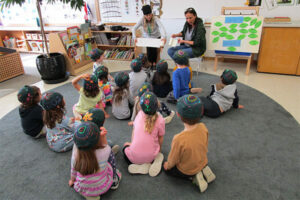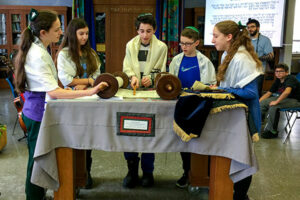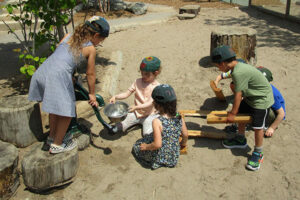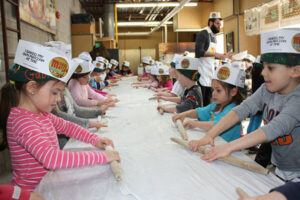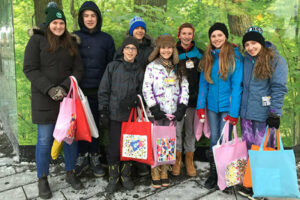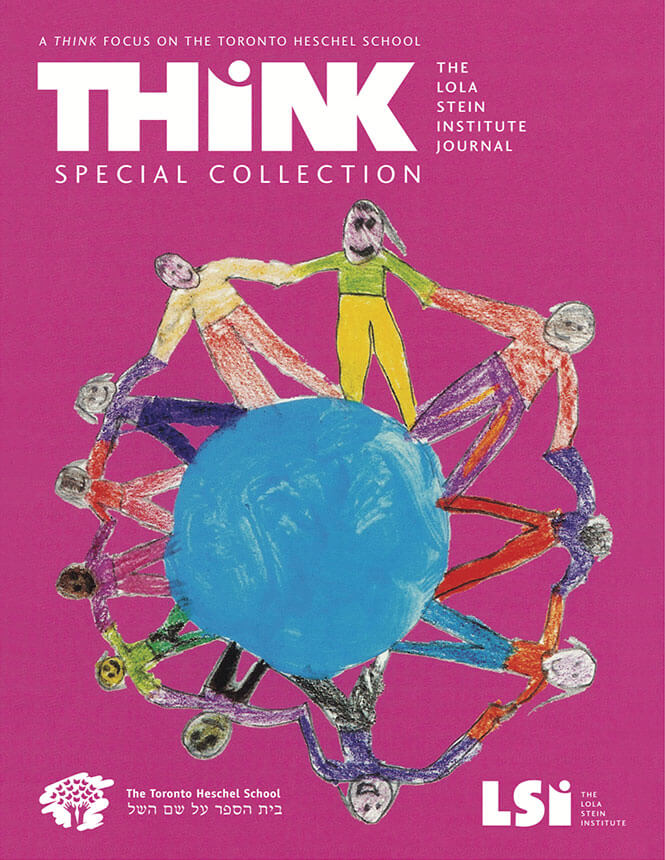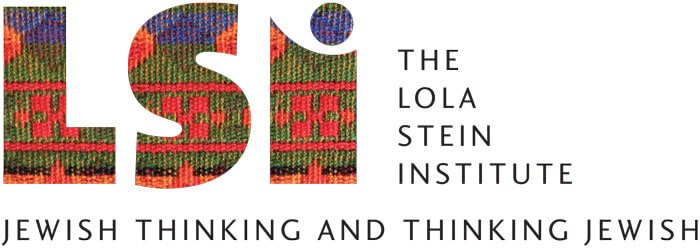- How We Teach

- First Column
- Second Column
- Third Column
- Case Studies

- First Column
- Second Column
- Culture & Community

- First Column
- Second Column
- News & Views

- Admissions

- First Column
- Second Column
- Support Us

- About

- First Column
- Second Column
- Parent Hub
- Attend an Open House
- Take a Tour
- Donate Now
- Calendar
- Blog
- 416-635-1876
- Search
Education for the Next Generation
Using Academic Disciplines to Teach Children How to Thinkby
Sir Ken Robinson is an internationally recognized leader in education, creativity, and innovation. He asserts that, as a society, we are no longer certain what our children will need to know to be successful in the future.[1]
Citing the rapid rate of change in society today, Sir Ken has boldly articulated that what students learn today might not be useful tomorrow. He says we don’t know what “stuff” or what “information” they will need.
What we can anticipate is that our children will have to be good thinkers and, especially, good learners.
They will need to be capable of analyzing problems and new situations. Their generation will be required to develop well-considered innovative solutions for the many changing situations they will encounter. We don’t know what “stuff” they’ll need to know, but we do know they’ll need to be smart, mentally agile, and creative.
But wait! If a content-based curriculum is inadequate, what happens to math, science, language arts, history – all the courses and subjects that we associate with a good education? Should we replace them with a “critical thinking class” or a “creativity class”? I think not. I believe it would be throwing the baby out with the bathwater. We would lose excellent educational practices developed over centuries, even as we refresh our educational vision.
Rather than jettisoning traditional school subjects, I suggest we reconceive their role. We should value them, not as a means to convey certain information, but as vehicles for developing specific ways of thinking, for honing cognitive abilities, and for nurturing habits of mind. Instead of math or science or language or music being a matter of “stuff” deposited in the minds of our children, we can appreciate these classes as “disciplines,” as ways of training our minds towards particular ends. Since we don’t know what specific information our children will need, our best recourse is to teach them what we do know in ways that sharpen their minds for the future. Indeed, this is exactly what academic disciplines were originally all about.
The Scientific Revolution (1550–1700) was primarily a revolution in thinking, not in information. The discipline of science involves asking authentic questions, developing hypotheses, designing and conducting experiments, and reaching provisional conclusions that lead to more questions. The scientific method imbues students with curiosity and confidence and gives them practice in analyzing dilemmas they are sure to encounter as they grow. Looking up known facts, even under the glorified name of “research,” is not science.
Mathematics involves representing quantities and processes in symbols that can be manipulated in efficient, logical ways. Therefore, it is critical that students appreciate the relationship between symbols and the processes they represent.
Similarly, language arts must engage students in thinking like real writers. Teachers can activate their students’ imaginations and encourage ideas to flow. Thereafter, students can learn to organize ideas in ways that allow them to communicate their thoughts to a reader. This discipline includes teaching children grammar in a functional way, where commas, periods, and quotation marks are not seen as “conventions” but as tools for making expressions clear.
In social science and history classes, students should examine primary sources and discover how historical knowledge is constructed. When they approach their study as “historians” and “archeologists,” they learn to ask critical questions, link their ideas to other knowledge, and ground their conjectures with evidence.
The arts – visual art, dance, music, drama – are key disciplines that train students in flexible and creative ways of thinking. As research continues to show, when we practise an art, we strengthen our mind’s executive function, which is the ability to self-regulate and stay focused on a task.[2] Whether students are working with modeling clay or their own bodies and voices, the arts facilitate how students experience the physical materials of existence. Indeed, the arts offer us ways to express thoughts, feelings, and ideas that might otherwise remain buried. Innovation depends largely on the arts.
The Judaic “subjects” must also be understood as “disciplines” and ways of thinking, and not only as “Jewish content” that we can use to teach children how to be “good Jews” or how to perform at b’nei mitzvah ceremonies. Rabbi Abraham Joshua Heschel wrote that Judaism is not just a way of living but also a way of thinking; and that the mitzvot are not done for one particular reason, they are “sources of emergent meaning.”[3]
If there is one essential Jewish way of thinking, it is the ability to look at a text or at a situation from many points of view, to look beyond the obvious, to interpret, and to seek and find deeper meaning. Knowledge of the Hebrew language is the gateway to any Jewish learning that takes us beyond the superficial.
Jewish disciplines, such as Chumash and Talmud, engender excellent memory skills and cognitive training. The intellectual skill achieved by Jewish scholars is inherent in textual analysis as well as in decoding strands of an argument, distinguishing competing commentaries, and correlating sources. It is no accident that in the 19th and early 20th century, Jewish students who were deeply trained in Torah and Talmud took so easily to the study of law, medicine, and science.
As we move through the 21st century, we see that “ways of thinking” or “habits of heart and mind” are becoming the central goals of education. Some of these “ways of thinking” are best nurtured through the traditional disciplines: thinking like a scientist, like a mathematician, like a historian, like a writer, and so on. Other “habits of heart and mind” are nurtured through the cognitively rigorous and ethically essential Jewish ways of thinking and being.
We want our children to discern what is happening in the world around them. We hope they seek to meet the challenge of rapid societal change with their hearts and minds wide open. Academic disciplines – both universal and Jewish – offer the most reliable framework for this important pursuit.
[1] See Ken Robinson, “Changing Education Paradigms,” retrieved March 12, 2012, from http://www.ted.com/talks/ken_robinson_changing_education_paradigms.html
[2] For examples of this research, see the Dana Foundation website which has links to numerous peer-reviewed articles. http://www.dana.org/artseducation.aspx
[3] Abraham Joshua Heschel, Moral Grandeur and Spiritual Audacity (New York: Farrar, Strauss and Giroux, 1996).
Greg Beiles , Director of The Lola Stein Institute and Head of School of The Toronto Heschel SchoolGreg Beiles became Director of the Lola Stein Institute in 2010 and Head of School at the Toronto Heschel School in 2014. For the 18 years prior to being named Head of School, Greg worked and taught at the school is increasingly senior capacities. From 2008 to 2010 he also served as Director of Curriculum and Training at the Lola Stein Institute.
Greg holds an MA in the Philosophy of Education from The Ontario Institute for Studies an Education and is a PhD Candidate at the Centre for the Study of Religion, both at the University of Toronto. His research explores a re-framed vision for Jewish education.
Greg’s publications include “Jewish education and pluralistic engagement”, in Discipline, Devotion and Dissent: The promise and problems of Jewish, Catholic and Islamic schooling, ed. G. McDonough, M. Memon, and A. Mintz. In the PEJE publication, Jewish Day School Education, he published “And you shall love your God.” His column “Awe and Wonder” appears regularly in think magazine; his titles include; “What Makes a School Jewish?” and “Education for the Next Generation: Thinking in the Disciplines.” Greg has led workshops and presentations in a variety of settings, including The Bridges Conference at the Banff, York University, the Jewish Federation of Ottawa, and the Lola Stein Institute, A few workshops titles include: A Critical Thinking Approach to Numeracy; Five senses and the Five Books of Moses; Metaphor and God; Understanding Understanding; Discipline & Wonder: Integrating the Theories of A.J. Heschel and Howard Gardener in an Educational Context.
PREVIOUS ARTICLE
A Sustained VisionNEXT ARTICLE
Role Models, PleaseSpecial Feature
Everything Depends on the TeacherRole Models, PleaseUsing Academic Disciplines to Teach Children How to ThinkEducation for the Next GenerationDouble Commitment to the Individuality and Jewish Identity of Each ChildA Sustained VisionWhy Rabbi Abraham Joshua Heschel is Our InspirationA Thoughtful Jewish SchoolOur Sages Tell Us
Columns
Perspectives
 The Lola Stein Institute (LSI) is a centre of inventive educational thinking and addresses the challenge to re-frame schooling for the exigencies of our times.
The Lola Stein Institute (LSI) is a centre of inventive educational thinking and addresses the challenge to re-frame schooling for the exigencies of our times.

